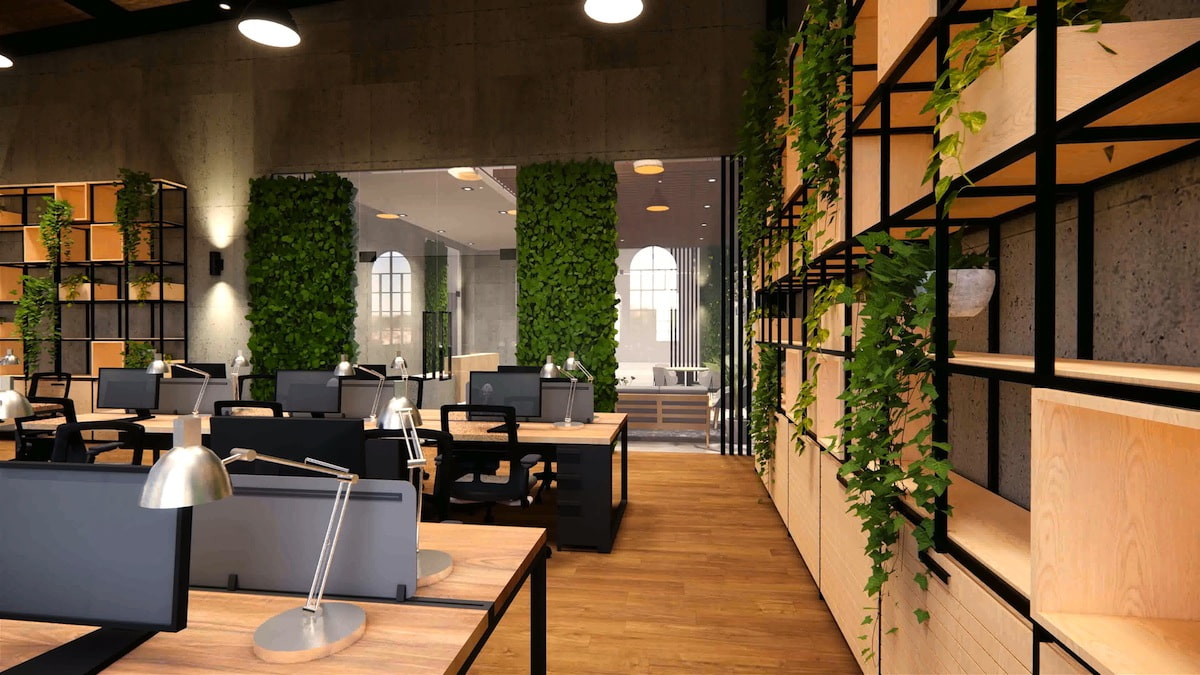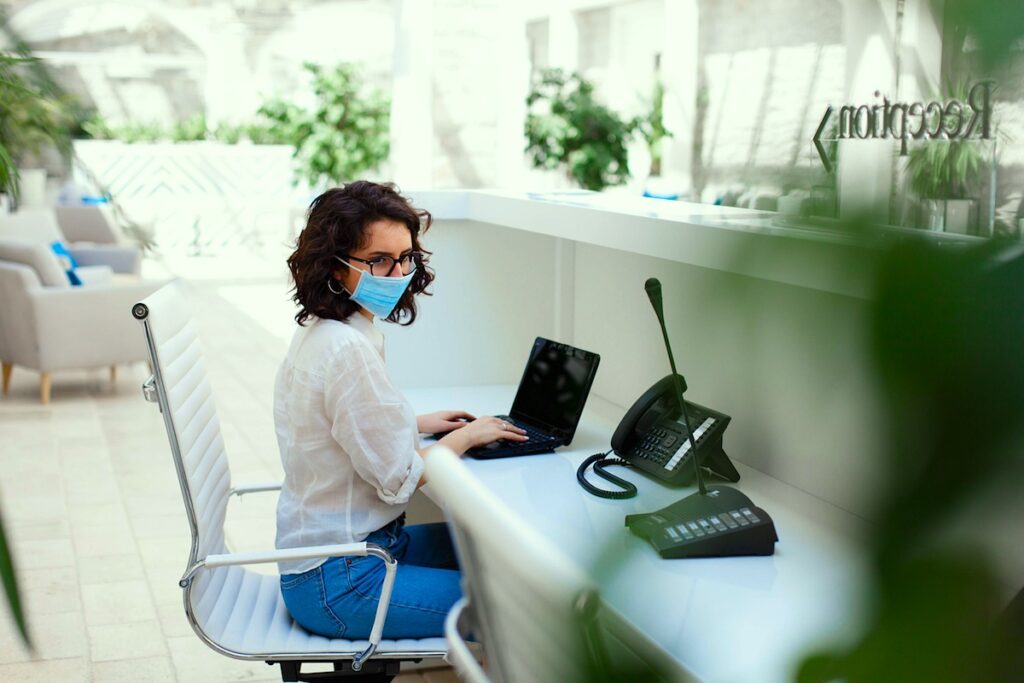
Credit: Anon Tae
8 Great Ways Plants Improve Workplaces
Especially now, as businesses try to attract employees back to the workplace and find a happy modicum with working virtually, plants can be a big part of the solution.
The evidence that plants improve workplaces as well as some of the most important aspects of business and workforce well being is well documented. It’s simply more relevant now than ever, in the post-pandemic push to return to a semblance of normalcy.
One of the primary sources of supporting research* is the widely acclaimed 2015 Human Spaces Global Report on the Impact of Biophilic Design** —an independent survey of 7,600 office workers in 16 countries including the U.S., Canada, Australia, Brazil, France, Germany, India, Denmark and Spain.
Here are the principal findings of this body of research—all compelling reasons for businesses to pave the way back to the workplace with plants:

Credit: Marina Andrejchenko
1. Plants Increase Employee Productivity by Up to 15% – Easily the most important reason from an employer’s perspective, it’s hard to imagine a more cost-effective way of increasing workforce productivity than introducing plants in offices and business environments of all types, including retail spaces and manufacturing facilities. Attention Retailers: “productivity” can also mean the increased willingness of consumers to spend in a plant-rich retail setting.
2. Plants Increase Creativity by as Much as 15% – The importance of creativity and innovative approaches to problem solving are gaining traction in every type of business imaginable. To be able to promote such valuable assets and behaviors simply by introducing plants into the workplace is a ‘no-brainer’.

Credit: G-Stock Studio
3. Plants Increase Workforce Well Being by Up to 15% – Consider the hundreds of billions of dollars spent by U.S. businesses on healthcare costs, not to mention mental health and the cost of lost productivity. The fact that the comparatively tiny cost of plants can enhance workforce well being so meaningfully can be hugely significant.
4. Plants Decrease Symptoms of Ill Health and Poor Concentration by as Much as 25% – Think about it: plants can have an enormously positive impact on the combined cost to U.S. businesses of worker absence due to poor health and lack of focus, is in the billions of dollars annually¬—no small feat.
5. Plants Decrease Workforce Fatigue by Up to 38% – Be it the pressures white collar workers face attempting to meet management’s expectations, or the long hours and volume quotas that factory and fulfillment house workers endure, the typical work environment can cause fatigue on a massive scale. The fact that plants can help businesses get the better part of the way to cutting worker fatigue in HALF is extraordinary.
6. Plants Decrease Levels of Anxiety, Hostility and Depression by 37-58%, a reduction of MAJOR significance – These factors not only contribute to worker illness, absence and ineffectiveness; they are among the root causes of workplace disputes, sexual harassment and lost productivity. Plants promote positive attitudes and pleasant workplace environments.

Credit: Art Photo
7. Plants Decrease Carbon Dioxide Levels in Workplace Environments by 10% in Air-conditioned Buildings, and by 25% in Buildings without AC (approx.) – Carbon Dioxide (CO2) is known to cause a variety of human ills ranging from headaches, dizziness, restlessness, tingling or a ‘pins & needles’ feeling, difficulty breathing, sweating and/or tiredness—to increased heart rate, elevated blood pressure, coma, asphyxia and convulsions. Plants make the perfect complement to manmade control systems in the built environment by absorbing CO2 while emitting oxygen.
8. One, Small Plant per Sq. Meter/approx. 9 Sq. Ft. Improves Memory Retention – Considering the torrent of data that the average worker is bombarded with throughout their workday, just think what some modest plantscaping could do for the combined recall of your entire workforce.
Even the color green, itself brings a positive influence to any indoor environment, especially the workplace. Studies* indicate that the color, green promotes calm, serenity, peace and a sense of a well being.
Avant Garden embraces biophilic** design. We work closely with our commercial clients to improve worker health, productivity and effectiveness by plantscaping the workplace environment.
*Sources – In addition to the results of The 2015 Human Spaces Global Report on the Impact of Biophilic Design, supporting data encompasses the results of various studies of plants (both in the work environment and in nature) and the color, green by NASA, the University of Technology (Sydney, Australia), The
Agricultural University of Norway, the Wisconsin Department of Health Services, the American Psychological Association (APA) and a 10-year study by Exeter University (UK).
**Biophilia – the study of the natural tendency of humans to seek an affinity with other life forms in nature.

